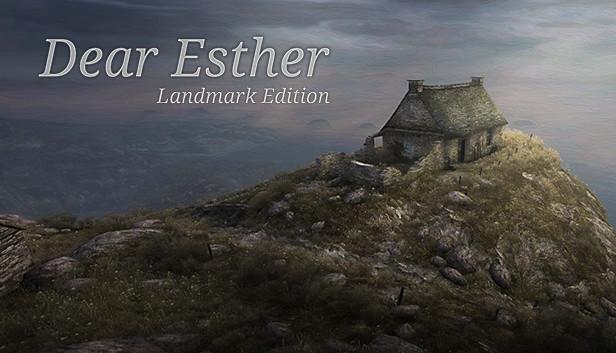Dear Esther was published in 2012 by The Chinese Room. It can be played on the PC, certain consoles, and iOS devices. Dear Esther is a single player game, and targets a more mature audience as the story is convoluted and involves darker topics such as death. The pacing is also quite slow and, as a walking simulator, is intended for players who are patient explorers. I played this game on my iPhone and finished it despite the really bad motion sickness I got.

I argue that Dear Esther uses walking as a way to explore not only the island, but also the main character’s inner mind. Walking becomes synonymous with thinking, as trudging through the island causes memories and inner ramblings to surface. The mechanics in Dear Esther are quite simple, where players can look around and move in four directions (forward/backward and up/down are interchanged depending on if the player is in water). The camera is in first person, and the player acts as the main character in the story. The setting is a deserted island, and as the player reaches certain landmarks, the character narrates their thoughts pertaining to his wife’s death and a former inhabitant of the island.
Since the mechanics are simple and the path of the island is bounded and somewhat linear, the player actually does not have a lot of control over their actions. The summit, with a red, blinking tower on top, is hinted as the final destination early in the game, but there is not a clear path towards it. The only thing the player can do is look around and scope out where to go next. Therefore, players are keen to grab on and pay attention to any narration that occurs, as the narration both points out certain interesting landmarks within the environment, and acts as a hint that the players are moving in the right direction. As the narration ends, players are left in silence, and resuming the simple act of walking leaves them with their own thoughts and ponderings of the character’s story. Thus, the player mirrors the condition of the character — they roam through the environment with no clear purpose, and are left alone with their own stream of thought.

In the latter half of Dear Esther, when the player enters the cave system, the realization that the environment is a direct reflection of the character’s thoughts becomes very apparent. The player moves through improbable and absurd spaces, just as the character’s own musings become more absurd and confused. The final form of the island is set by the moon, car wrecks, and candles, as the character begins to mix stories of his wife’s death and of the island’s previous inhabitants. The player walks through this made up landscape as imagined by the character. The player can thus understand the character’s convoluted inner mind as they move through this space.
The dynamic between the player and the character, where the player walks through the character’s mind, leads to exploration as an aesthetic. Even though the player is walking a linear path, the player feels driven to explore the character’s back story, as the narration is left vague and discrete. The physical layout of the island also gives the player some sort of satisfaction as they figure out where the path is. For example, only when players reach a dead end and are forced to turn around do they realize that there is a switchback in the mountain or some staircase that they initially missed.

As for how the game can be improved, I think that the pathing could be more clear and obvious. The immersion was broken several times as I backtracked and walked desperately against invisible boundaries when I became lost. Suddenly, the feeling of being a ragged wanderer disappeared as I became laser focused on my new mission to find the right path. I was no longer the character and instead became a very frustrated, motion sick gamer. I think that the game provides enough compelling narration and scenery to evoke feelings of exploration, such that it can afford to create more obvious pathing. In fact, the unclear paths made me want to quit at some point. Since the exploration is not so much of the physical space, rather it’s more so of the character’s inner mind, the pathing could have been simpler to allow players to immerse themselves in the narration.




